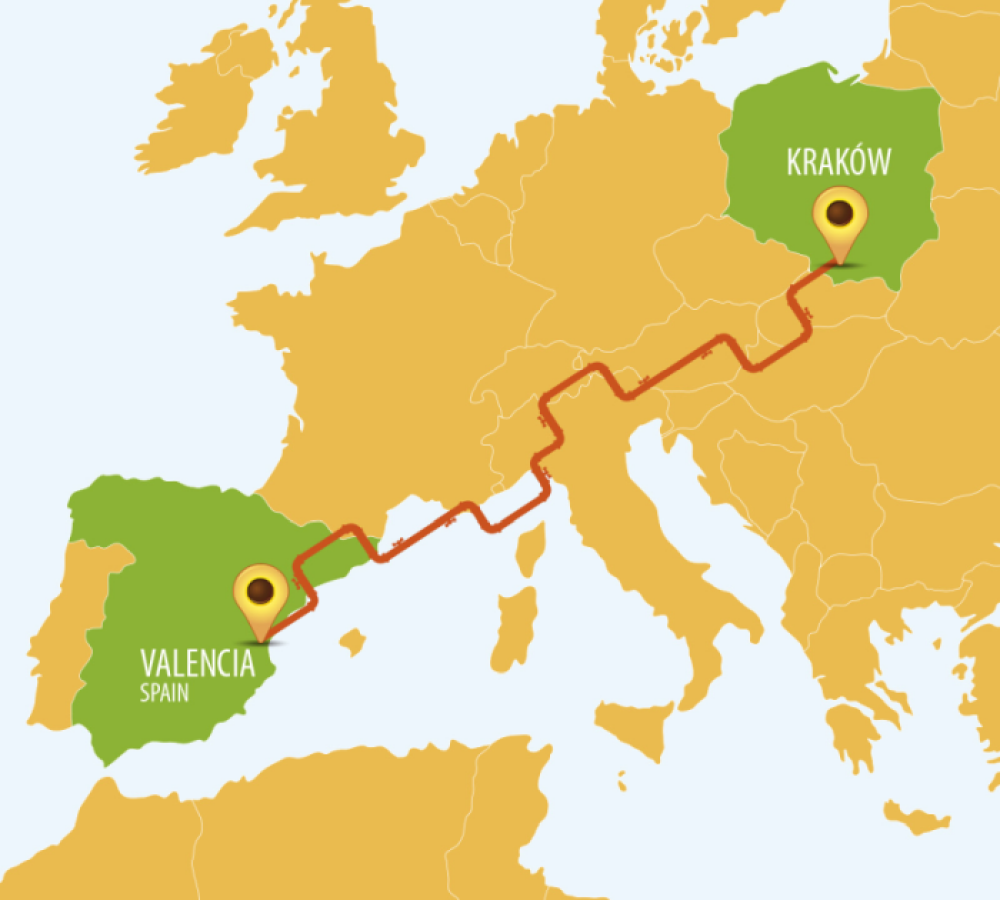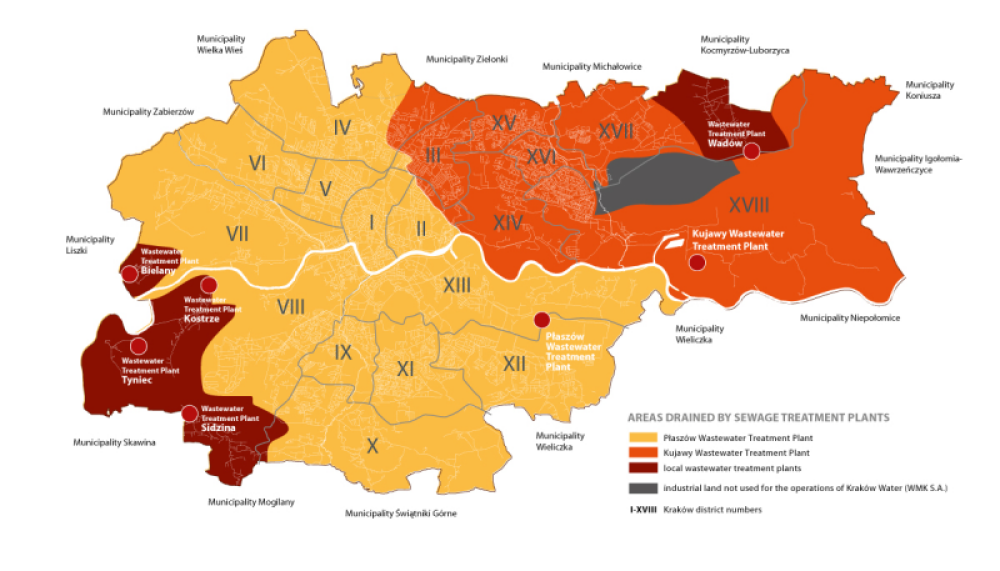The sewage system of Kraków comprises two subsystems with their own sewage treatment plants. The Kraków subsystem with the Płaszów Sewage Treatment Plant serves approximately 500 000 residents and the Nowa Huta subsystem with the Kujawy Sewage Treatment Plant – approximately 250 000. Both subsystems operate by gravity, while in areas where the elevation makes it impossible to discharge sewage into the central subsystem by gravity, there are local sewage networks with local sewage treatment plants. Kraków has a combined sewage system (sanitary sewage and storm water is drained by the same sewer) in central parts of the city, while in its outer parts, the system is separate (sanitary sewage and storm water are drained separately).
Together with laterals, the sewer system is approx. 2 052 km long. It is estimated that almost 98.5% of Kraków Municipality residents are able to use the municipal sewer system.
The length of the sewer system is like the distance from Kraków to Valencia in Spain, as the crow flies.

Sewage system map

Damaged sewers are systematically restored or replaced: approximately 10 km of sewers are overhauled every year. Whenever possible, repairs are done by methods requiring no excavations. New sewers are built in a similar way.
Taking into account the future direction of Kraków's development and the capacity of the sewer system, a part of the Kraków catchment was reconnected to the sewage system of the Nowa Huta District. EU funding made it possible to built the Lower Wisła Terrace (DTW) Collector Sewer, which helped to shift some load from the Kraków System (Płaszów Sewage Treatment Plant). This collector sewer was constructed as part of a project called Płaszów II Sewage Treatment Plant in Kraków.